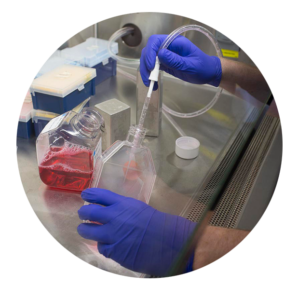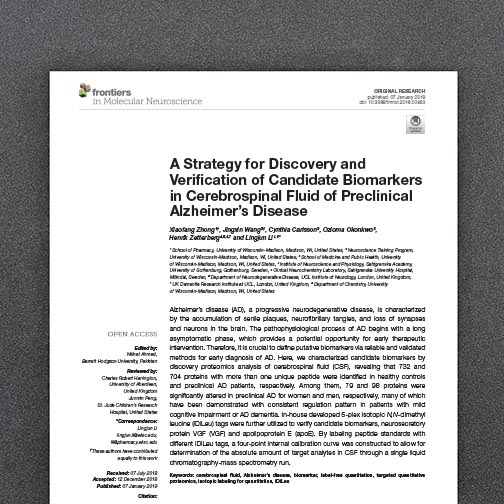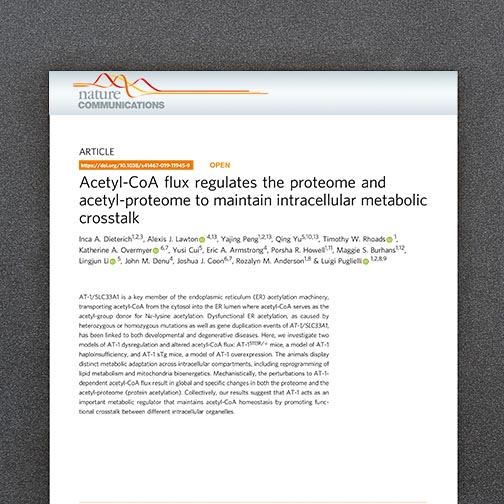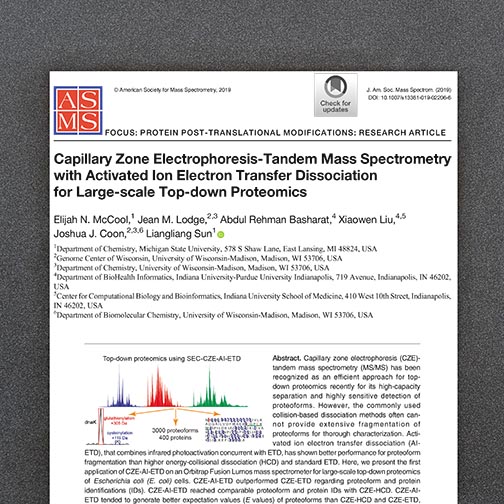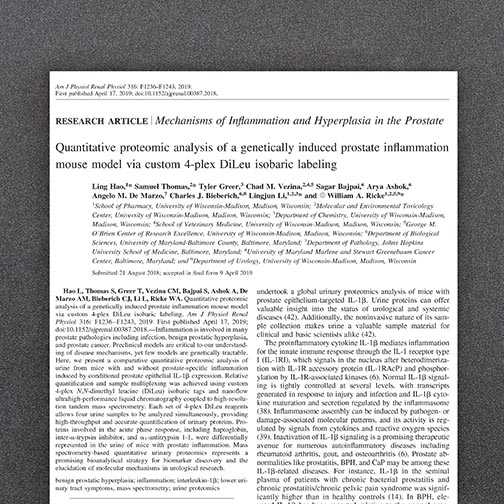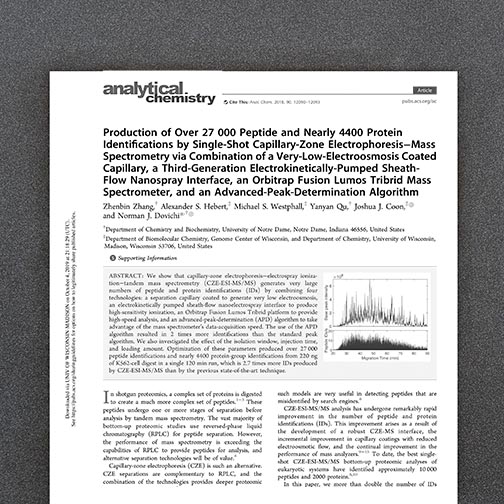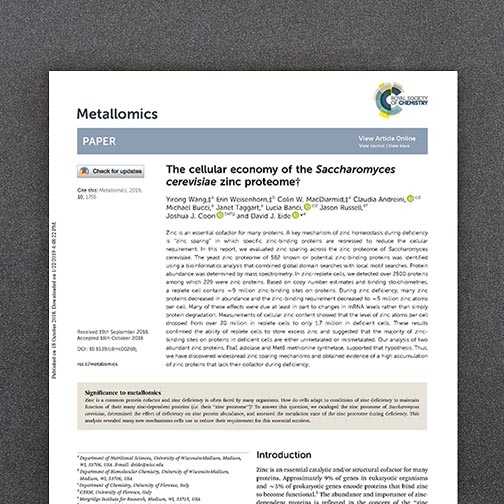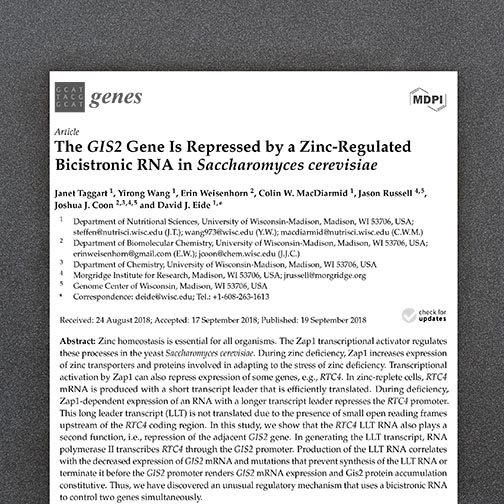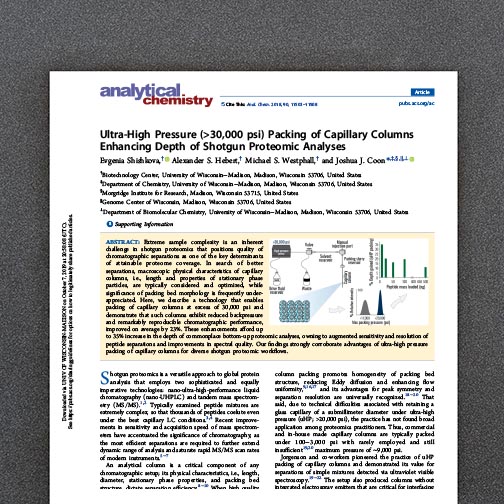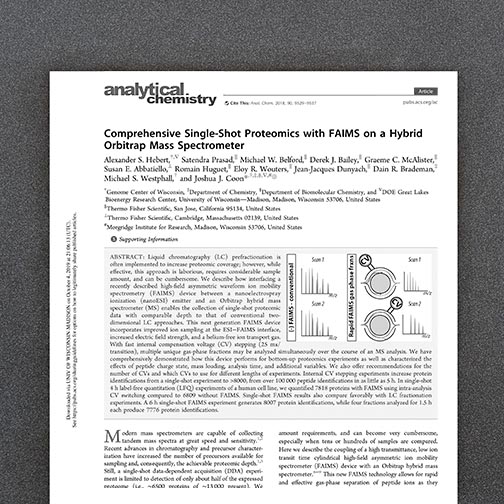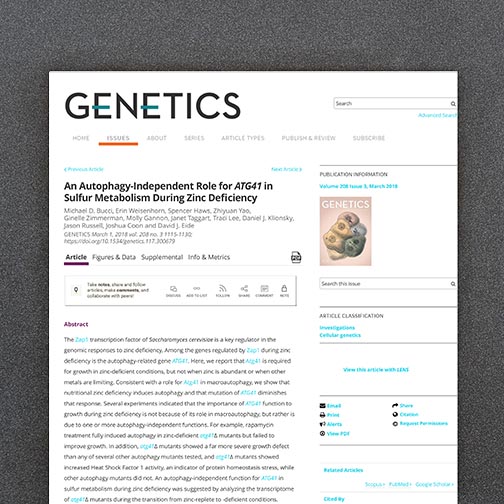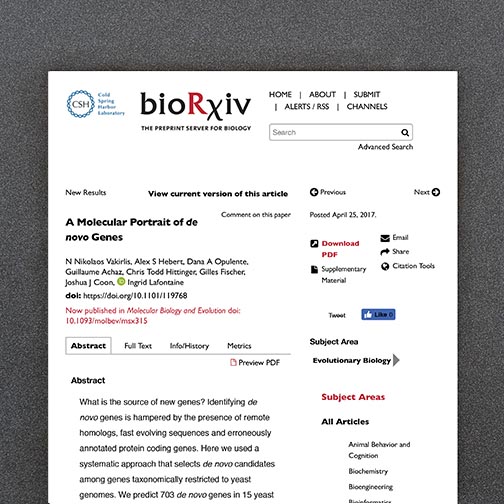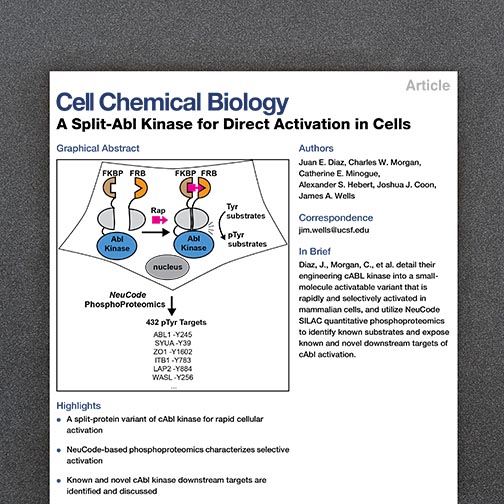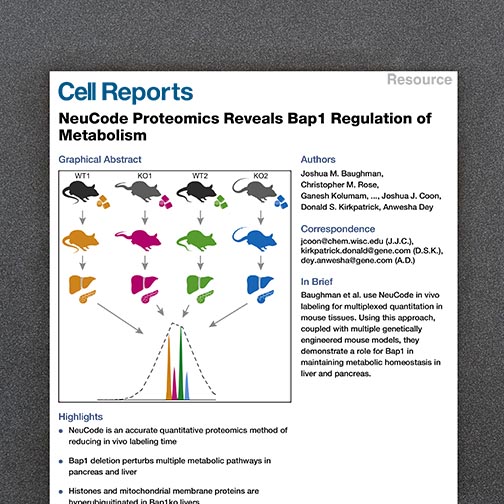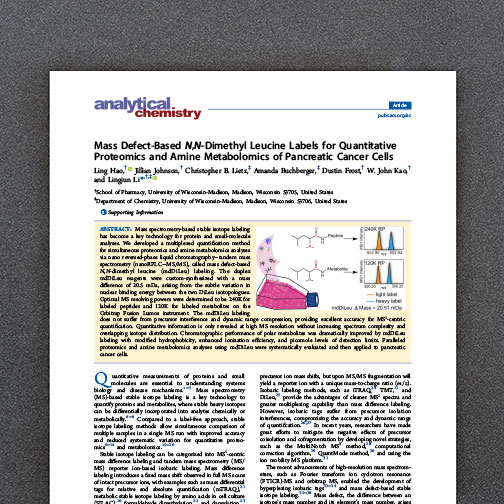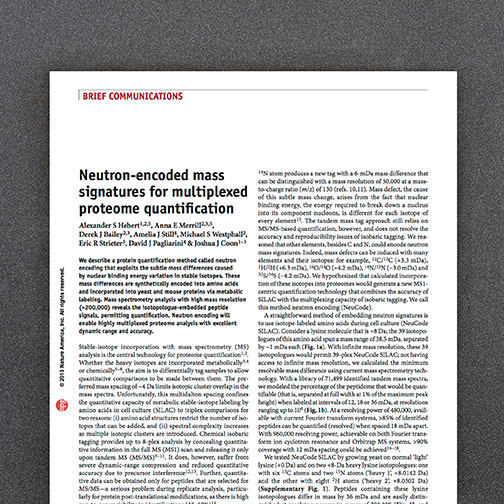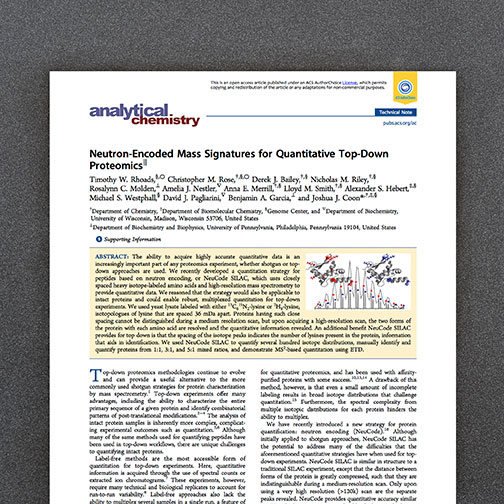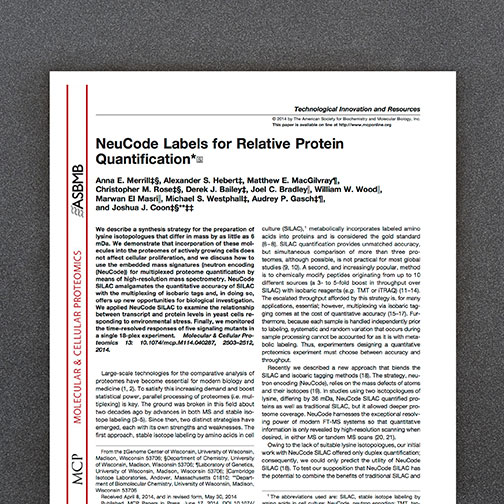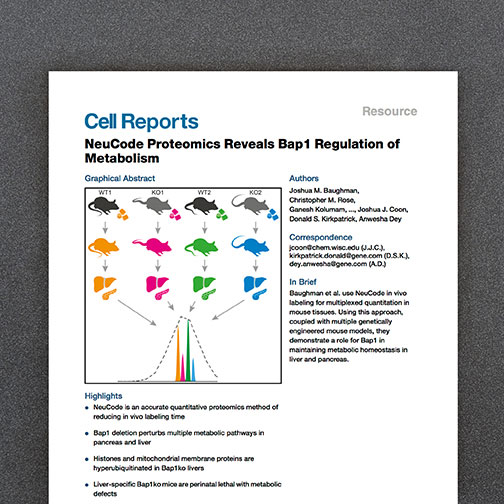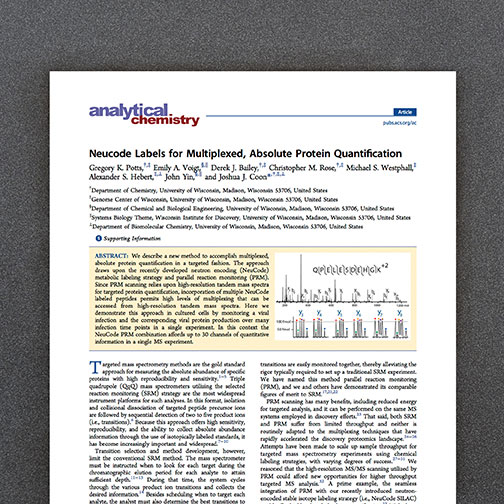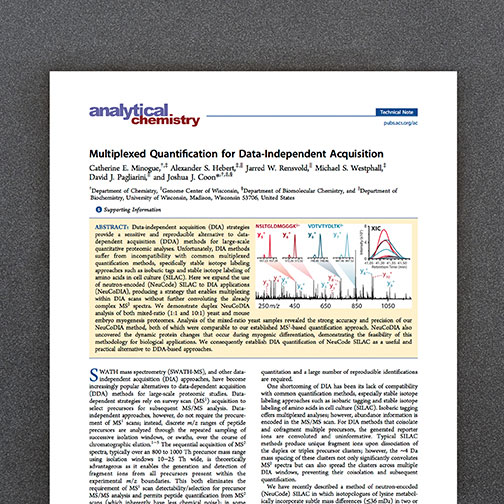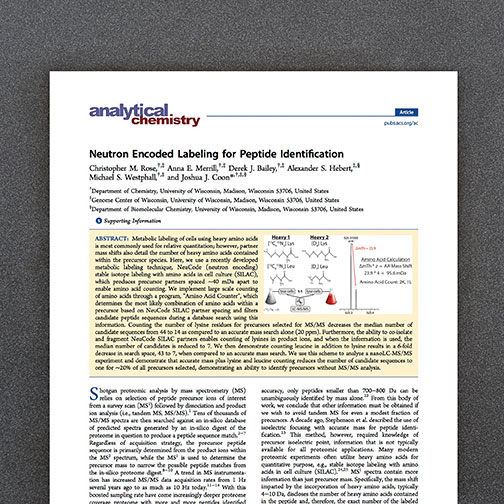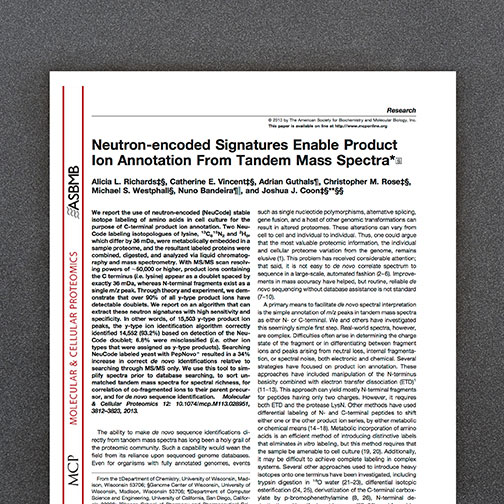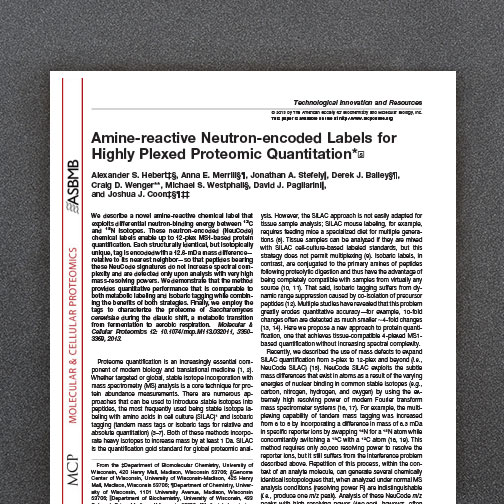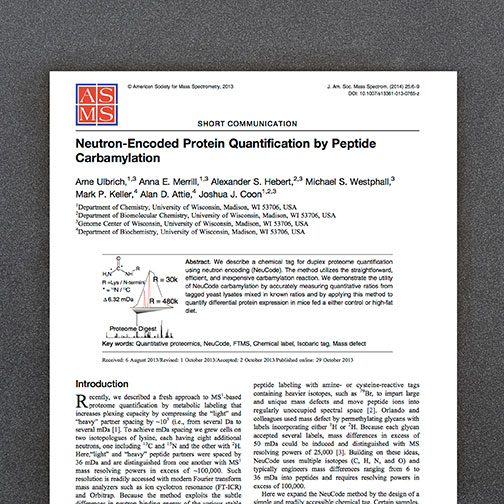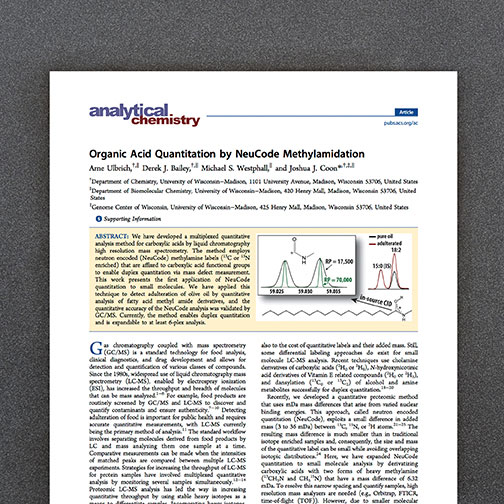How NeuCode Works
Consider a lysine molecule that has two additional neutrons – i.e., +2 Da. There are six ways one could build this molecule, e.g., 2 15N or 2 2H, and so on. Because of differences in neutron binding energy, each of these isotopologues has a distinct mass, with the two aforementioned examples differing by 18.5 mDa. Inclusion of four, eight, or 12 additional neutrons into the lysine molecules allows one to generate nearly a hundred unique isotopologues, all spaced about 1 mDa apart.
High resolution mass analysis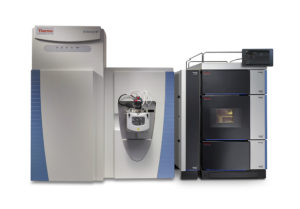
High resolution mass analyzers, i.e., Fourier Transform instruments, especially the Orbitrap, have become widespread and offer the resolving power necessary to distinguish NeuCode lysine isotopologues embedded in identical peptides. Our initial description of NeuCode SILAC utilized two +8 Da heavy lysine amino acids, one with six 13C atoms and two 15N atoms and the other with eight 2H.[1] These two isotopologues differ in mass by 36 mDa and our experiments demonstrated that m/z peaks separated by this mass difference are easily distinguished at resolving powers above ~ 100,000
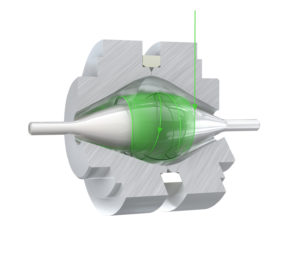
When using NeuCode a low resolution MS1 scan is first acquired and used to select precursors for data-dependent MS/MS analysis. Next, a high resolution MS1 scan is acquired, in this case using an Orbitrap analyzer, permitting detection of the two NeuCode peaks and, thus, allowing quantification. While this scan is being acquired tandem mass spectra are taken using the ion trap analyzer on the Orbitrap ion trap hybrid system. Note that spectral complexity of the low resolution (R = 30,000) MS1 and the MS/MS scan are not impacted by the presence of the labels; in fact, you cannot even tell the labels exist unless they are revealed by high resolution analysis.
Learn more





